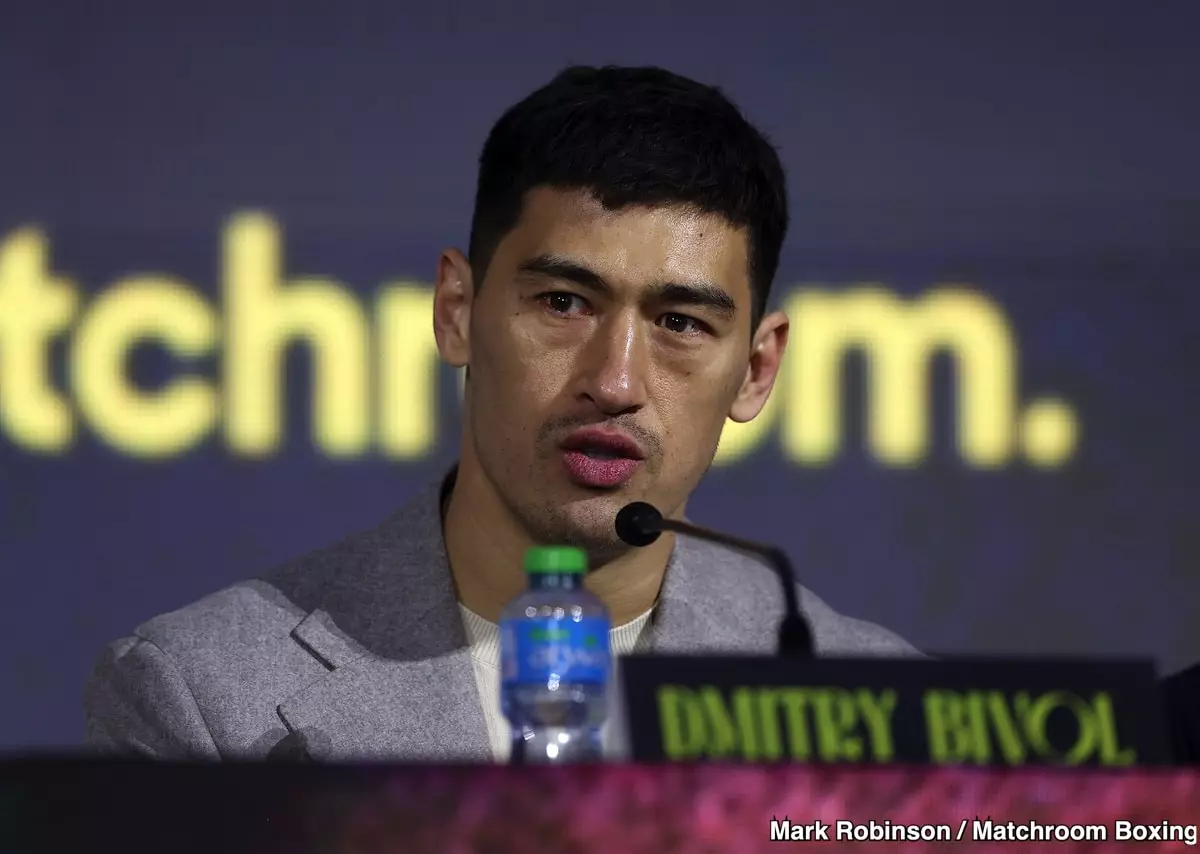As the boxing world eagerly gears up for the highly anticipated showdown between Terence Crawford and Canelo Alvarez, the discussions surrounding this bout are heating up. The fight, scheduled for September in Las Vegas, promises to showcase not just two elite athletes, but also a fascinating clash of styles and strategies. Despite the distinct advantage in size and strength that Canelo brings to the table, some experts, including light heavyweight champion Dmitry Bivol, are daring to suggest that Crawford could emerge victorious. This opinion adds an exciting dynamic to the pre-fight narratives, highlighting the unpredictability that boxing is known for.
Bivol, who has previously bested Canelo in an impressive display of boxing skill, underscores the importance of not dismissing Crawford’s chances. He expresses surprise at Crawford’s physicality after bumping into him, which prompts critical questions regarding Crawford’s ability to adapt to the light super middleweight class at 168 pounds. It’s crucial to note that this weight shift isn’t merely numerical; it symbolizes a significant transition that deals with power dynamics and fight strategies. Bivol emphasizes the adjustments Crawford would need to make in terms of handling Canelo’s imposing presence in the ring, thus setting the stage for an intriguing chess match.
Skill vs. Strength: The Heart of the Debate
Many fans and analysts are divided on who will take home the win, often predicating their opinions on the fighters’ respective styles. On one hand, Canelo Alvarez embodies raw power and toughness, characteristics that have solidified his status as a powerhouse within the boxing realm. His knockout capability is not just a statistic; it’s a psychological tool that has led many opponents to concede before stepping into the ring. In contrast, Crawford, an undefeated boxer with a resume that boasts technical finesse, could leverage his lightning-fast reflexes and awkward boxing style to outmaneuver his larger opponent.
The irony lies in the fact that if both fighters were of equal size, many would lean towards Crawford as the favorite. His unique boxing style allows him to create angles and exploit weaknesses, a tactic that has led to his success thus far. Yet, as boxing purists frequently remind us, weight divisions exist for a reason, and the physicality that Canelo brings could negate the subtleties of Crawford’s skillful approach. This inherent contradiction creates a riveting narrative leading up to the fight, where size and strength collide with strategy and finesse.
The Weigh-in: A Key Moment
As fight day approaches, all eyes will be on the official weigh-in, a critical moment that can often serve as a harbinger of the outcome. The anticipation surrounding how Crawford will measure up against Canelo’s formidable frame is palpable. How will these two athletes perform under the scrutiny of the scales? The weigh-in can impact both fighters psychologically; a heavy discrepancy or unexpected difficulty can shift the dynamics of an already intense matchup.
Experts like Bivol have hinted that while both fighters possess significant skills, the real question lies in the ability to adapt—adaptation to size, to power, and to the consistently pressing nature that Canelo embodies. Should Crawford manage to negotiate the pressures of this new weight class without surrendering too much fundamental talent, he may just find a way to push the fight in his favor.
A Historic Encounter on the Horizon
Regardless of the predictions, the excitement is undeniable. Boxing fans and analysts alike are anticipating not just a fight, but a historic clash of two titans who are currently at the top of their game. With Bivol’s insights and the contrasting attributes of both fighters at play, this matchup shapes up to be a must-watch for anyone invested in the sport. As fanfare grows, so too does the hope for an extraordinary evening filled with drama, skill, and possibly an unexpected shift in the balance of power within boxing.
This September, the stage will be set for a modern-day classic.

